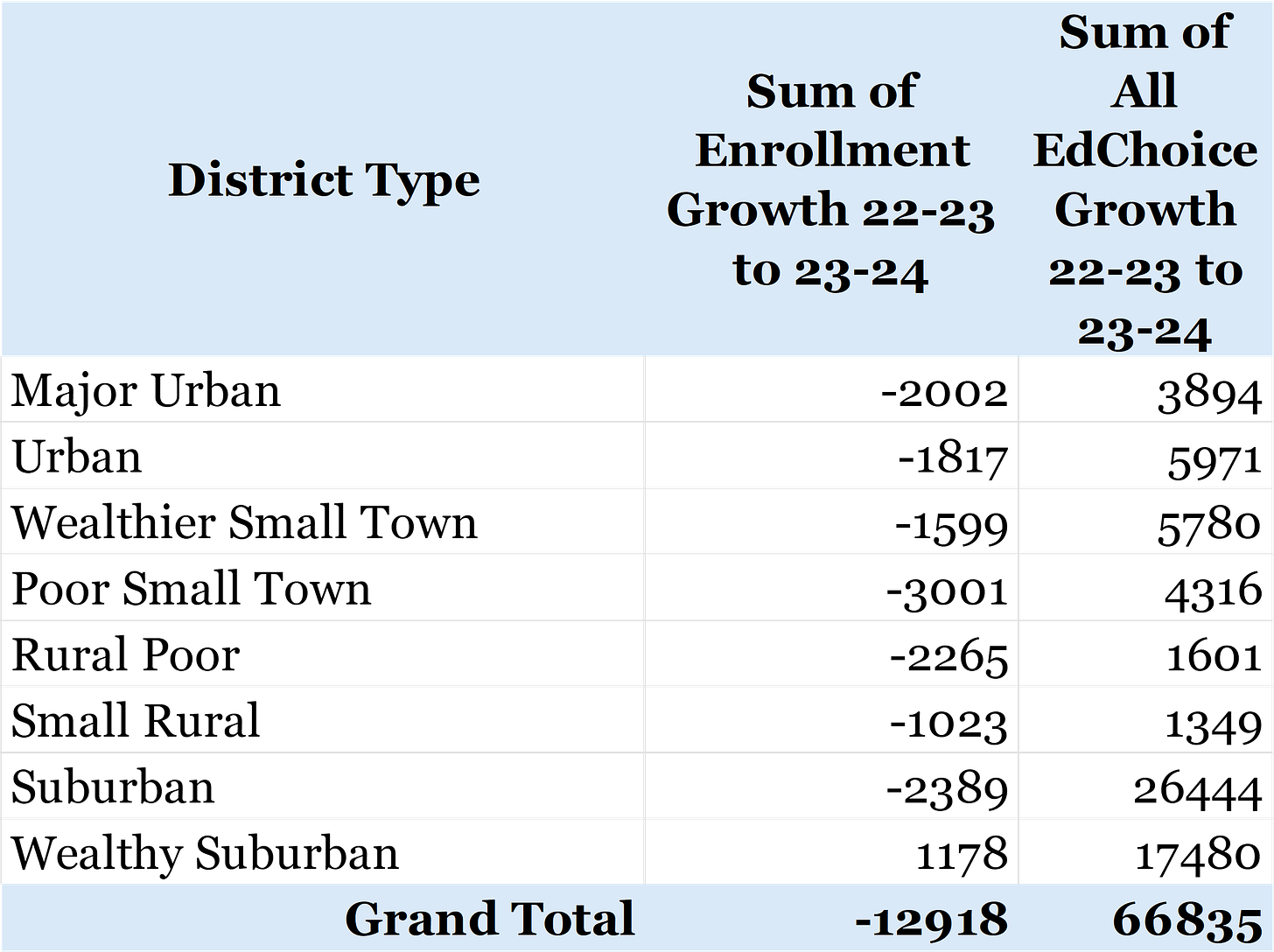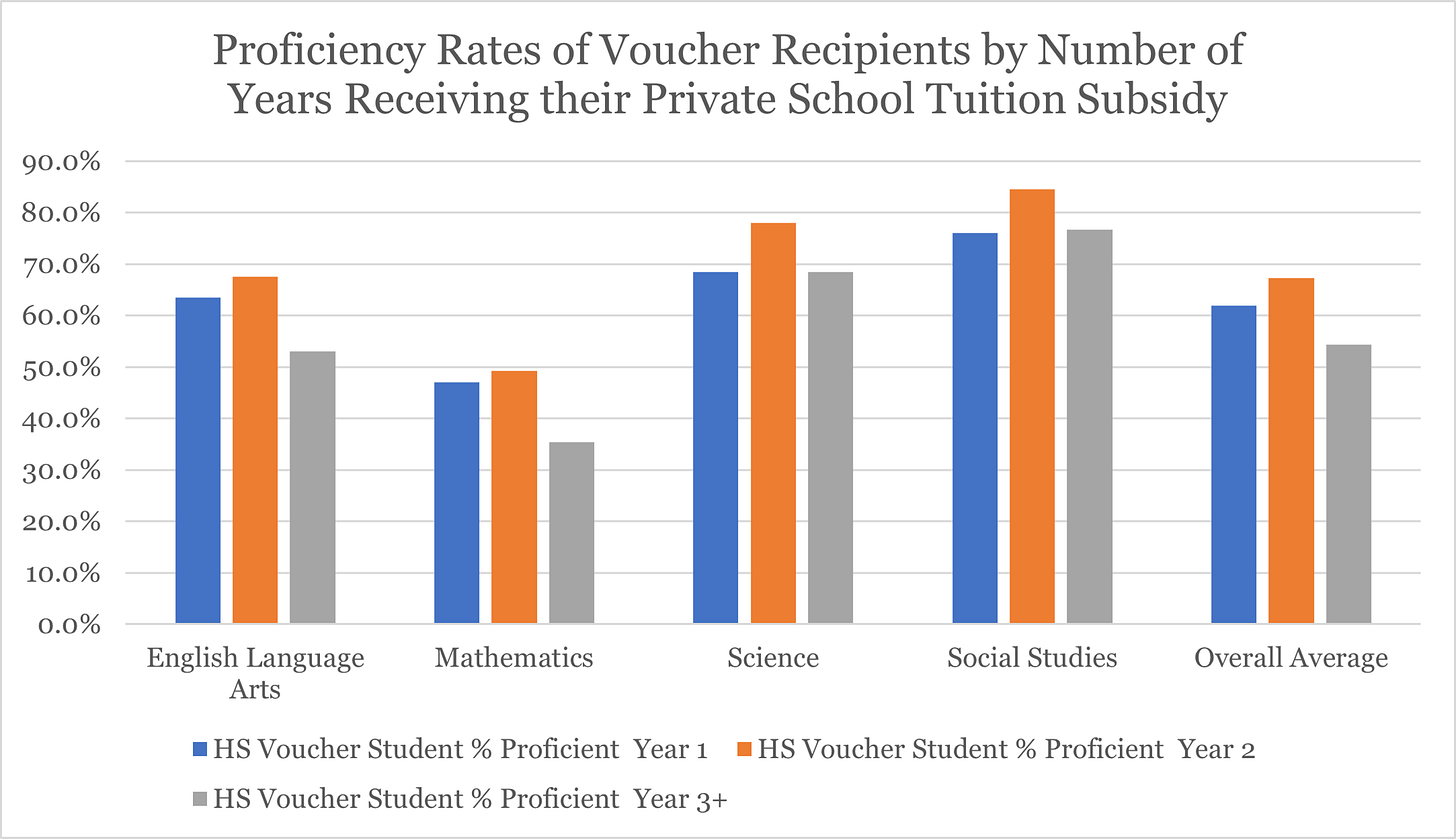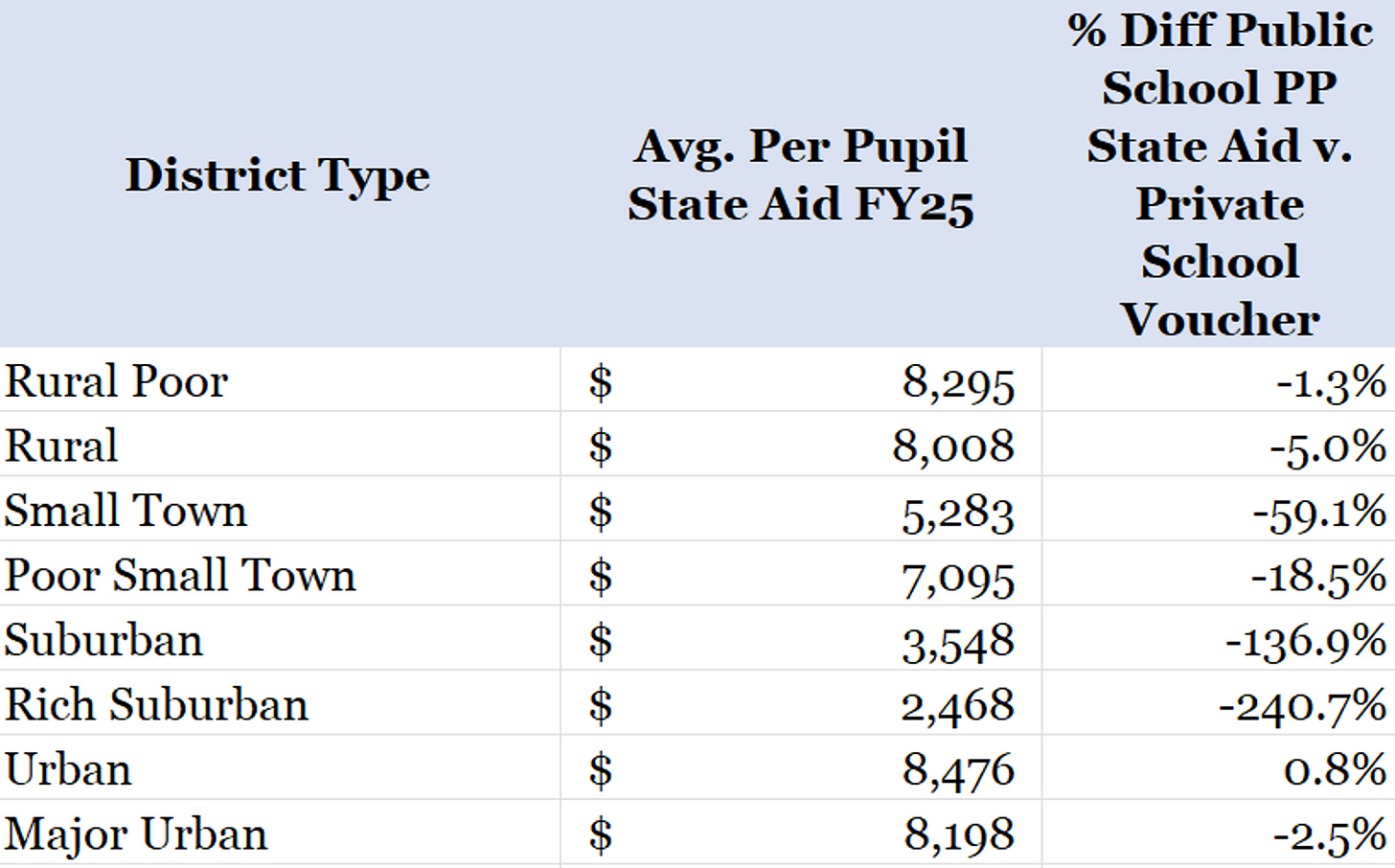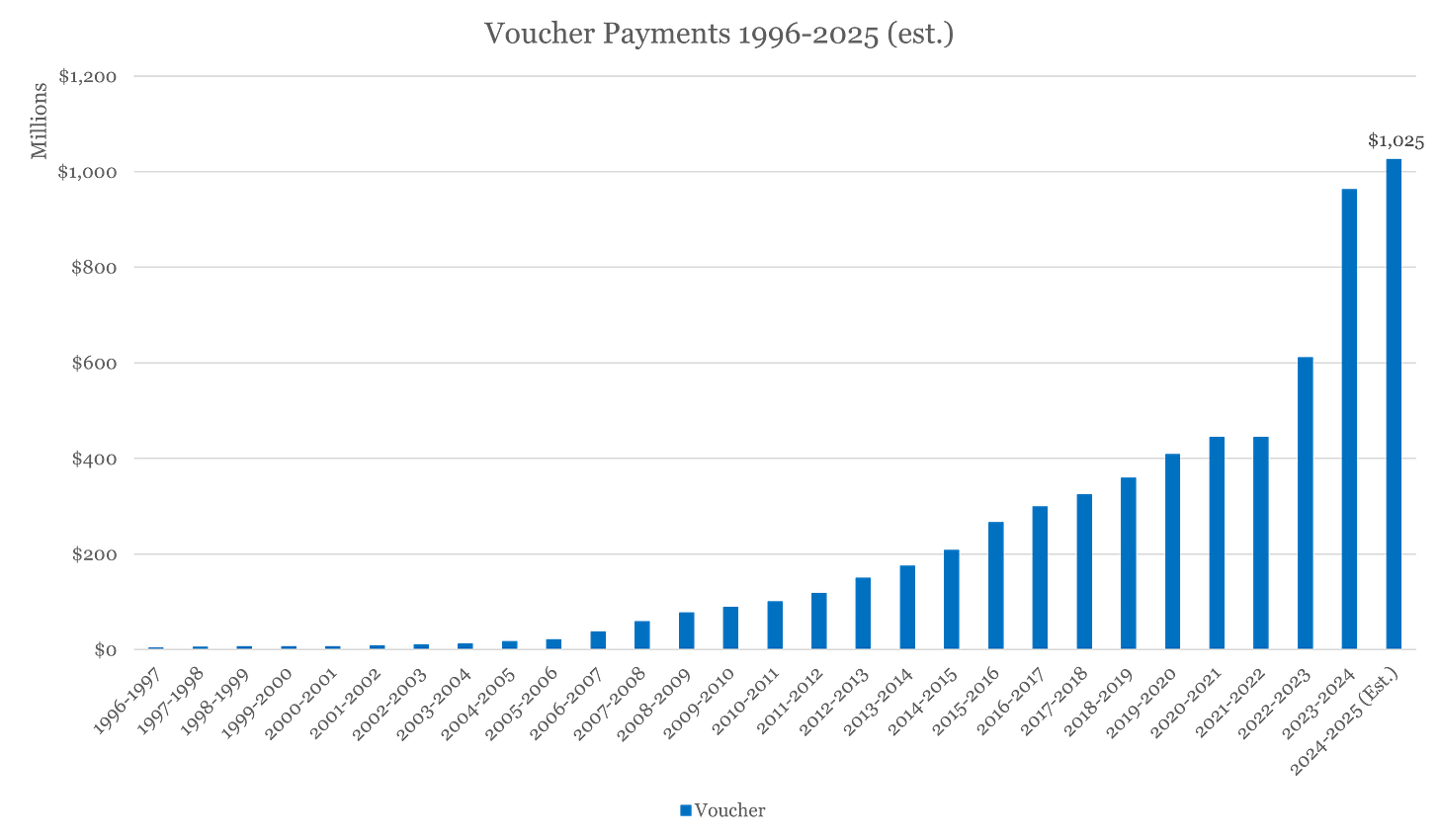10th Period: Data: Ohio Vouchers Clearly Unconstitutional

Current unelected U.S. Sen. Jon Husted receives the only honorary diploma from the Electronic Classroom of Tomorrow, which a few years after this photo was taken would be found to have bilked Ohio taxpayers out of more than $117 million for educating kids it couldn’t prove it actually educated.
One thing you’ll hear a lot about from Ohio’s Voucher proponents is that the taxpayer funded scheme to subsidize the private school tuitions for Ohio’s wealthiest adults who never had a kid in a public school was declared constitutional by the U.S. Supreme Court. Even our current unelected Sen. Jon Husted — the only holder of an honorary diploma from ECOT (see above) — mentioned it when he tried to frighten Upper Arlington into not joining the current voucher lawsuit.
While that may have been the case in 2002, Husted and his Republican brethren in the Ohio General Assembly and Governor’s mansion have spent the last 23 years undercutting the reasons Rehnquist allowed the program to move forward. Here’s the key bit of reasoning from Rhenquist’s opinion in Zelman v. Harris-Simmons:
"[a]ny objective observer familiar with the full history and context of the Ohio program would reasonably view it as one aspect of a broader undertaking to assist poor children in failed schools … [t]he program here in fact creates financial disincentives for religious schools, with private, religious schools receiving only half the government assistance given to community schools and one-third the assistance given to magnet schools." — Chief Justice William Rhenquist, June 27, 2002
So let’s examine his reasoning vs. the data produced since 2002. I’ll look at each element in turn.
-
“Assist poor children”
As I’ve written before, it’s clear from state data that poor children are most definitely not receiving the lion’s share of voucher funding. According to the most recent data examined by the non-partisan Ohio Legislative Service Commission, more adults earning more than $141,000 a year are receiving vouchers through EdChoice Expansion than adults earning less than $141,000 a year. And an astonishing 3 out of 4 adults receiving these tuition subsidies make more than $80,000. One in 4 recipients make less than $80,000. And an even smaller percentage of those recipients make less than the federal poverty line of $32,150 for a family of 4. LSC didn’t track folks making less than $80,000. Even more astonishing: the third largest number of tuition subsidies comes from people making more than $240,000 a year. And on the traditional EdChoice program, nearly 9 in 10 parents who get it don’t qualify as low-income. Clearly, this program is no longer part of the larger anti-poverty undertaking Rhenquist cited 23 years ago.
Source: Ohio Legislative Service Commission
-
“Failing Schools”
I have also reported many times how Ohio’s voucher students actually perform worse on state testing than their public school counterparts. According to the Cincinnati Enquirer, 88% of the time, kids taking vouchers attend private schools with lower proficiency rates than the school district in the private school’s mailing city. The pro-voucher Fordham Institute found that vouchers actually hurt performance. And beyond Ohio, there is no difference in performance, controlling for demographics. All this is despite the fact that private schools taking vouchers can use really any test they want to remain accountable to taxpayers, whereas public school districts have to take the state tests that are constantly altered to minimize public school student performance (but that’s another story). In addition, as you can see below, the parents taking these vouchers almost never had their kids in public schools to begin with. So they’re not even “escaping failing schools” anymore, if they ever were, which is why you never hear this argument anymore.
Finally, data have shown consistently that the longer private school parents take vouchers, the worse their kids do on standardized testing. Pretty clearly, if the private schools these parents are sending their kids to do worse on testing than the public schools the kids most likely never left in the first place, Rhenquist’s argument falls apart again.
Source: Ohio Department of Education data
-
“Financial disincentives”
Rhenquist focused heavily in his opinion about how at the time, the Cleveland voucher provided half the state per pupil money of the typical public school student. That is no longer the case. As you can see below, the average state per pupil funding in a public school is 10% less than the K-8 voucher and more than one-third less than the high school voucher. In addition, public school students in about 60% of Ohio’s public school districts receive less state per pupil funding than private school parents receive for their K-8 private school tuition subsidy. Public school students in about 80% of Ohio’s public school districts receive less state per pupil funding than private school parents receive for their high school private school tuition subsidy. Not quite the disincentive Rhenquist described, is it?
Breakdown by Public School District type and percentage it is below the private high school tuition subsidy private school parents receive
Number of Ohio Public School Districts whose students receive less state funding than private school parents’ publicly funded, private school tuition subsidies
Conclusion
The bottom line for me is pretty clear: None of the reasons Rhenquist gave in 2002 to uphold Ohio’s then-only voucher system in Cleveland (which was 0.8% the size of today’s program) would hold muster under the state’s current massive expansion.
Perhaps this is why voucher proponents have shifted to ham-fisted intimidation to quiet those who would simply ask state Republicans a straight forward question:
Why are they giving more than $1 billion a year to mostly well-off parents who are already sending their kids to private schools — all without auditing single penny — at the expense of shorting their constitutionally required funding of our state’s 1.5 million public school students?
Why, in short, do they value private school parents so much more than public school students?
It’s a question they must be required to answer. Again. And again. And again. And again. And again…
This blog post has been shared by permission from the author.
Readers wishing to comment on the content are encouraged to do so via the link to the original post.
Find the original post here:
The views expressed by the blogger are not necessarily those of NEPC.







